June 10, 2021
Makeover Buddies Up Outdoor Living and Pollinator Pizazz
In a rainfall gap last weekend, I ventured out to the Austin Outdoor Living Tour 2021. Invariably, I got so chatty with everyone that I only made it to a few homes. One that had my curiosity in high gear was this Open Envelope Studio design and build that illustrated a makeover with a typical yard like mine.
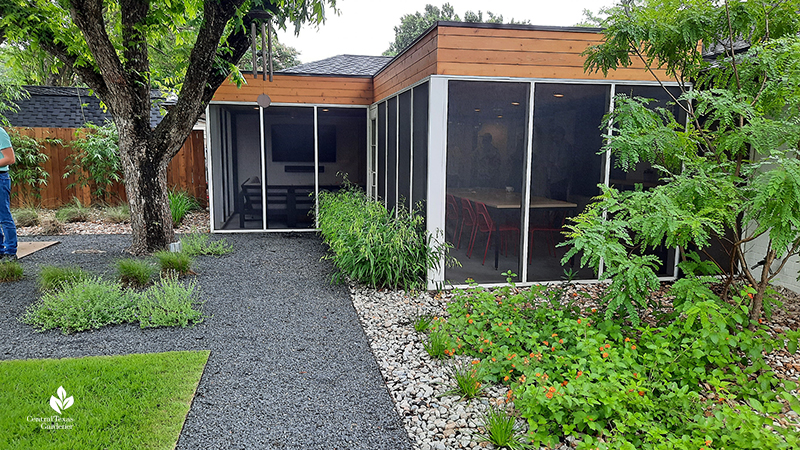
The screened in porch replaced a cobbled-together uncovered patio and scraggly grass under the pecan tree, while extending mosquito-free dining and living rooms filled with bird calls.
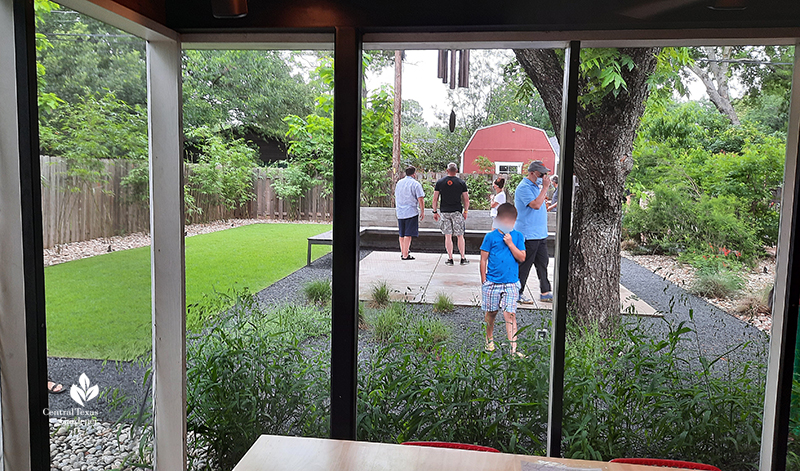
In the crush with everyone’s questions, I couldn’t absorb all the intricate design details from Open Envelope Studio co-owner and creative director Matt Norton, but you can read more about it.
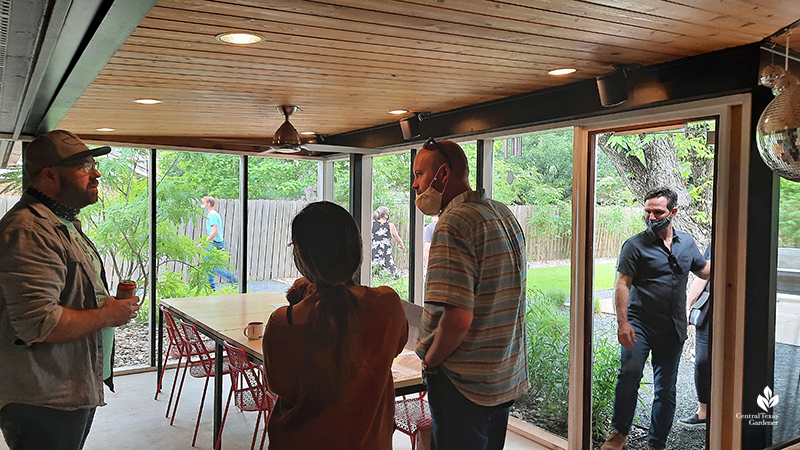
In 2018, OES landscape designers Angelica Norton and Matt responded to a young, busy family’s quest for a low-maintenance, water-saving garden that invited wildlife into their lives. Native inland sea oats lines one side. The Texas basalt gravel path and native river rock let rainwater infiltrate while fending off mud patches. In fact, despite all the recent rain, no puddles barred the paths or huddled against the foundation.
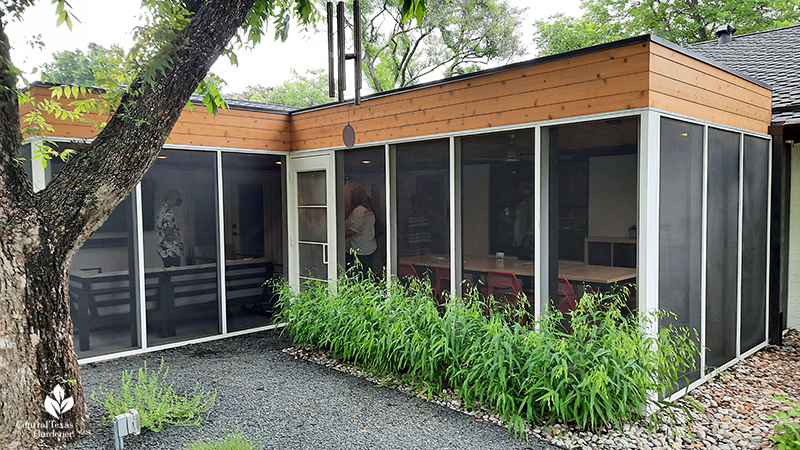
In the utility cove, salt and pepper river rock grounds feathery, wall-embracing native Arroyo sweetwood and lantana—both big pollinator buddies—to guarantee closeup butterfly and bee “oh wows” even from indoors.
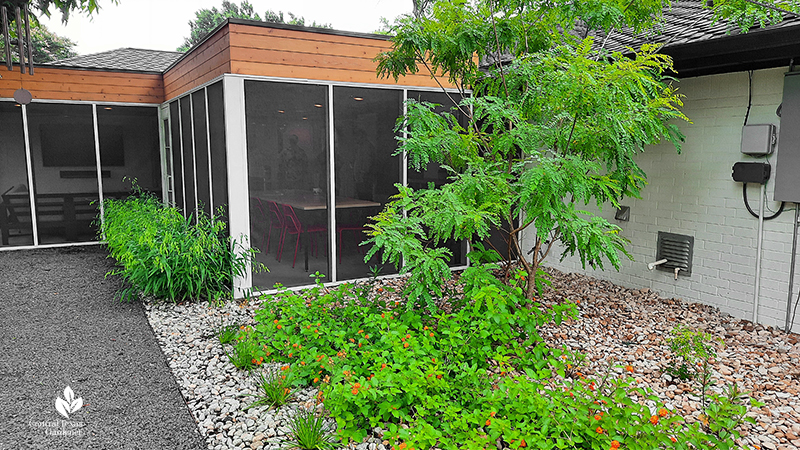
This plan also infiltrates rainwater while making access easy for those inevitable utility service calls! The Arroyo sweetwood breaks up the view to those essential boxes.
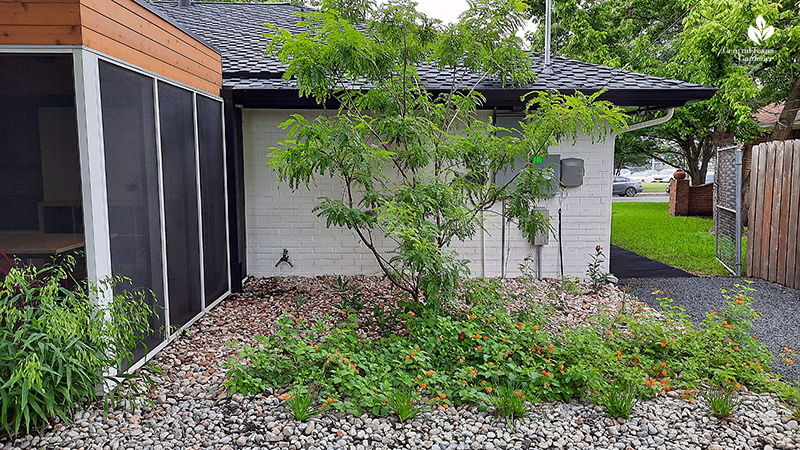
To hang out with friends and family outdoors, a poured-in-place concrete patio foots an L-shaped Ipe bench with ample room for entertaining. A board-form concrete wall makes both a handy backrest and an architectural clue to a new dimension beyond. Plus, it’s wide enough to set a plate or glass or even yourself!
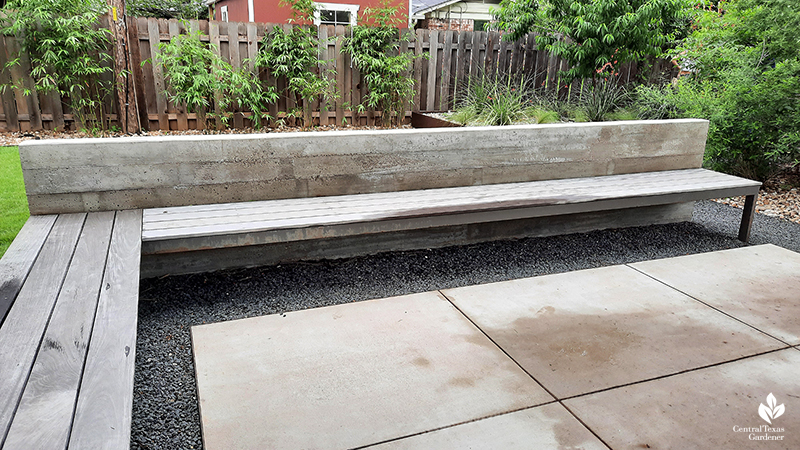
For childhood tumbles and barefooted wanderings, easy-care ‘Palisades’ zoysia softly carpets, while ‘Graceful’ clumping bamboo promises a non-invasive privacy and busy street noise screen.
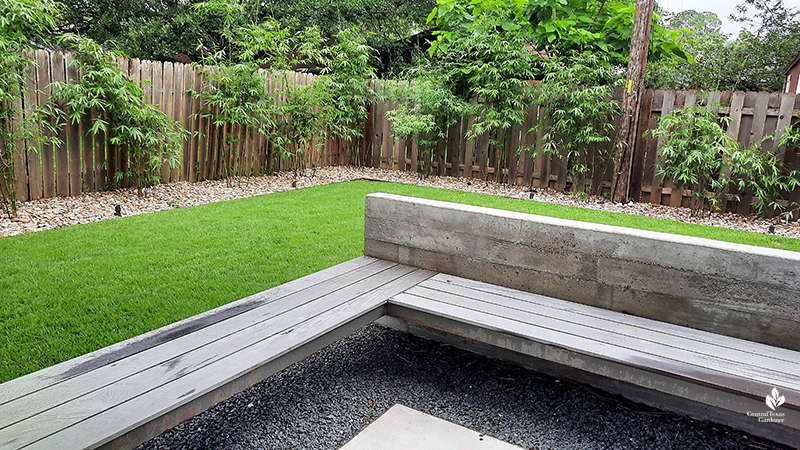
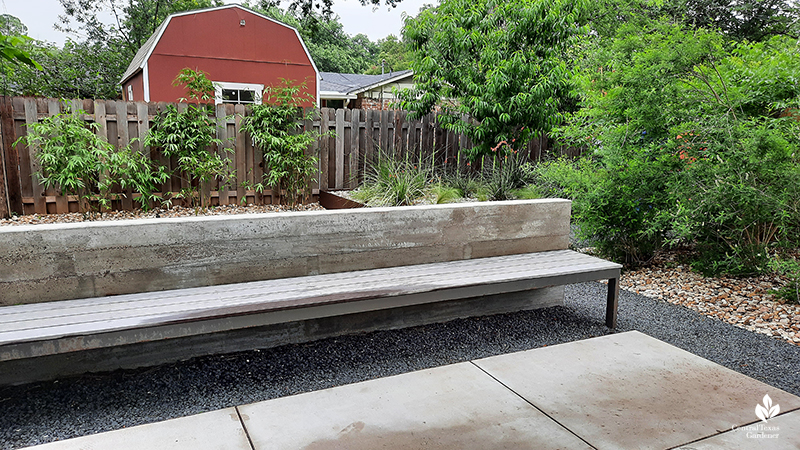
Low-maintenance, uncluttered plants absolutely don’t mean a lack of pollinator love! Native and adapted choices—succulents, perennials, annuals like native Salvia coccinea, native bunch grasses, shrubs and small trees—go hand-in-hand to engage the family with wildlife explorations every season.
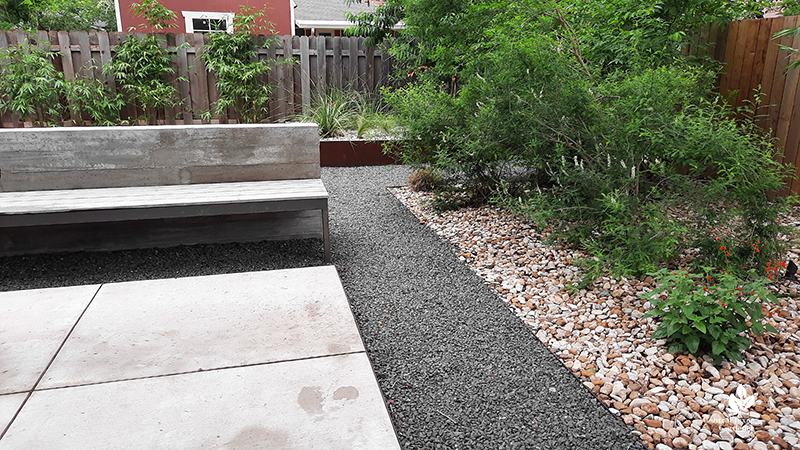
I guess the cloudy days prompted a native kidneywood to bloom ahead of its fall schedule, energetically welcomed by ebony, solitary spider wasps, beneficial predators that rarely sting.
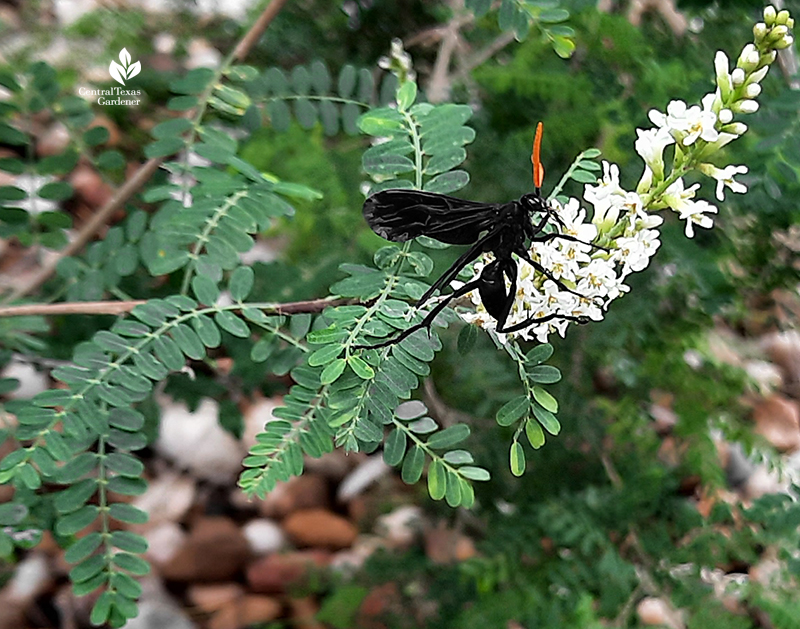
What I like so much, too, is the tranquility. I could have sat here with OES draftsman Ben Davis and chatted with the owners all day—procrastinating from returning to my out-of-control jungle!
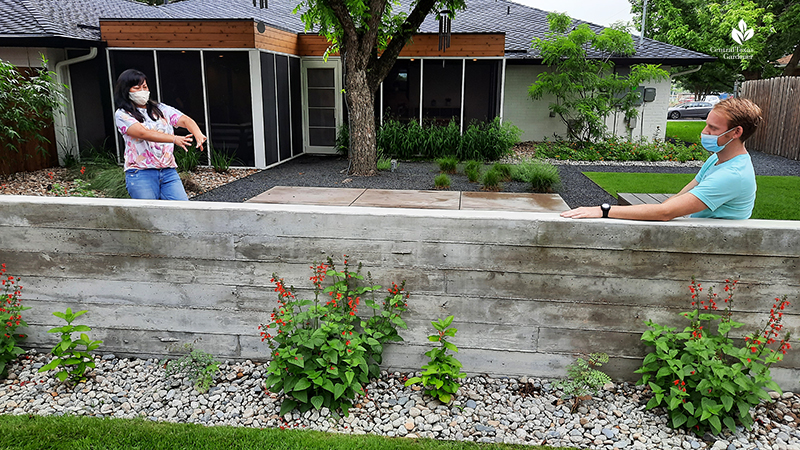
I met the whole enthusiastic family, including a vivacious daughter who showed me a Japanese eggplant she’d just picked, its color a perfect match to her cute kitty ears headband (I want!). Her mom was busy answering lots of questions, but later she took me on a tour of her vegetable garden.
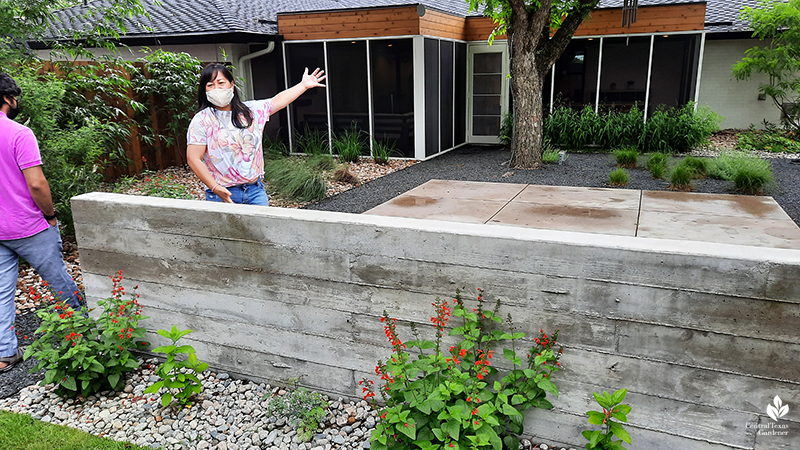
Even in this standard-sized backyard, they created and defined destinations, like this one into the vegetable garden. They framed its entrance with a ‘Red Baron’ peach on the left and native Mexican buckeye to the right. A raised bed contributes dimensional intrigue and good drainage for hummingbird-beloved succulents like red yucca (Hesperaloe parviflora).
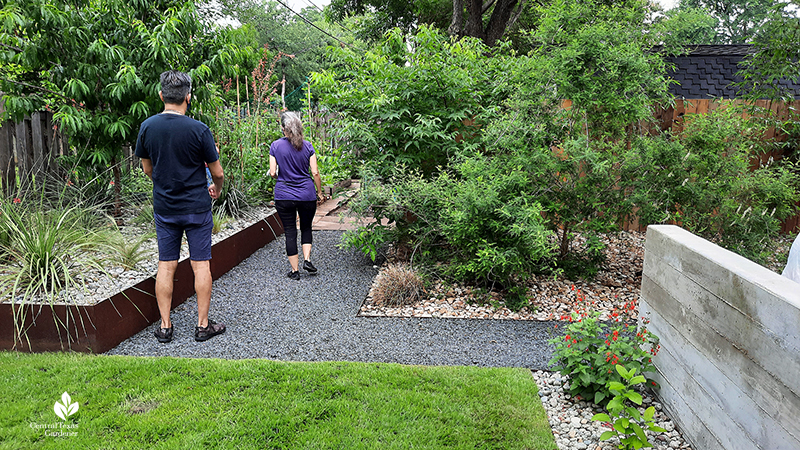
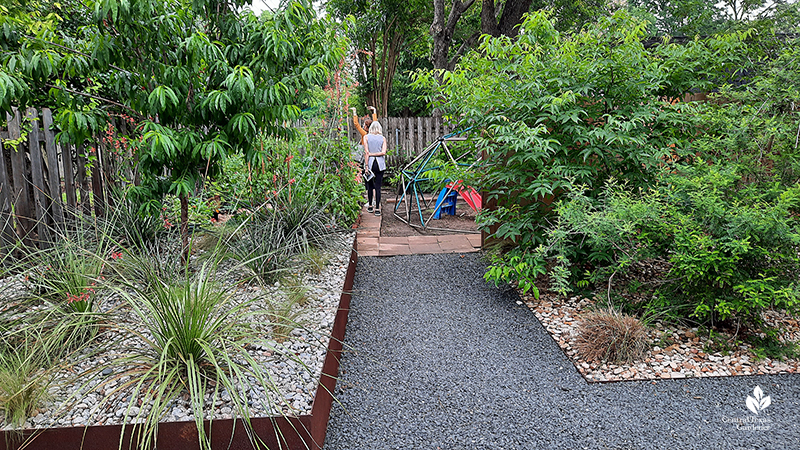
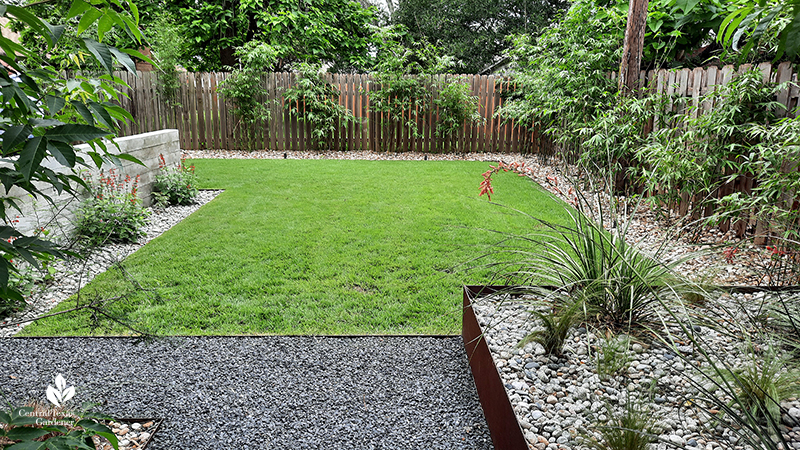
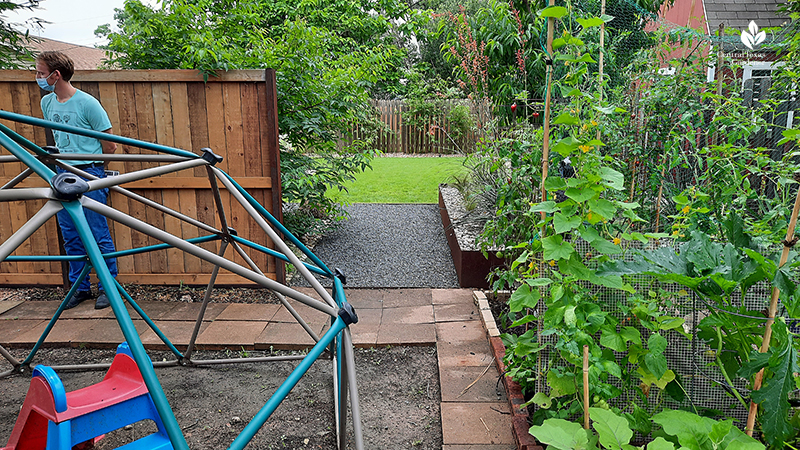
Robust tomatoes and summertime squash take the stage as cool-weather lettuces and onions await final harvest. A fake owl (and fake snake below) may fend off eager birds. Perhaps the cute red heart ornaments fooled them, or simply charmed them, as they did me. Whatever works is my motto! Just to be safe, the gardeners did enclose almost-ripe tomatoes in net bags. Always good to have Plan C, too!
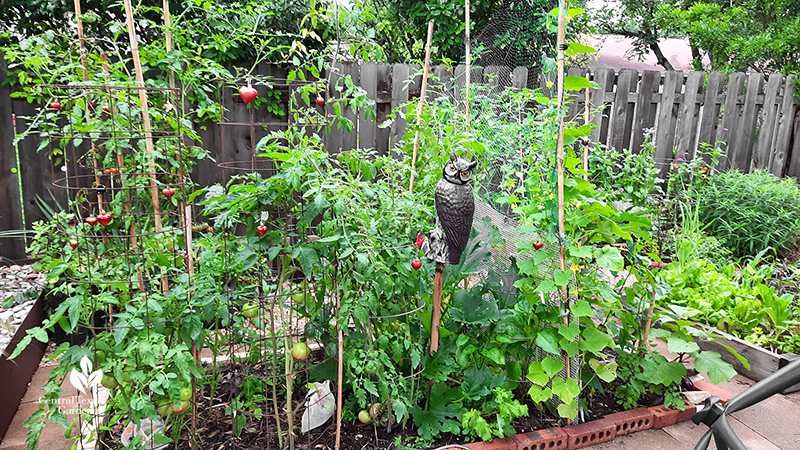
The owner plucked a leaf from shisho for me to taste. Called Japanese mint, it’s really a Perilla, a member of the mint family. She grows both the green and red varieties to use for sushi and other dishes.
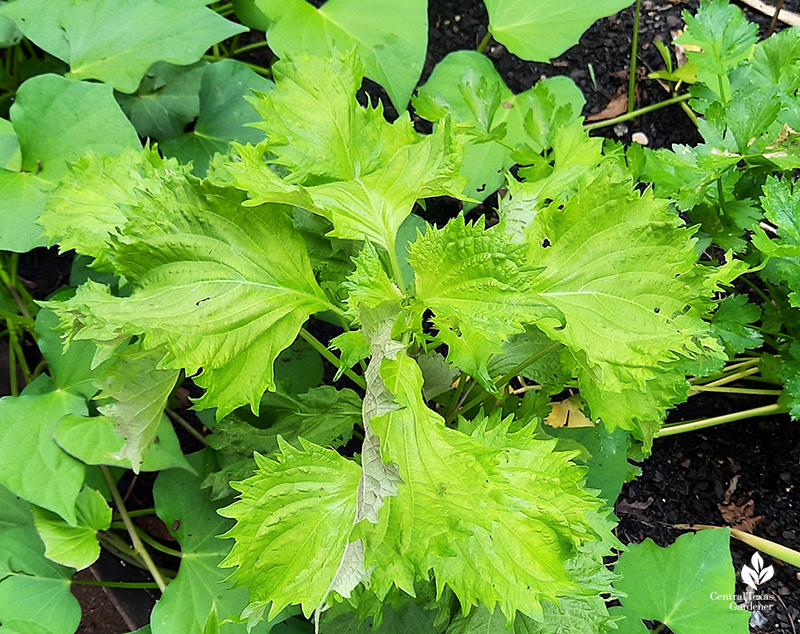
Edamame!

Japanese eggplant, a slender fruit. She orders seeds for these edibles since transplants may not be commonly found in nurseries.
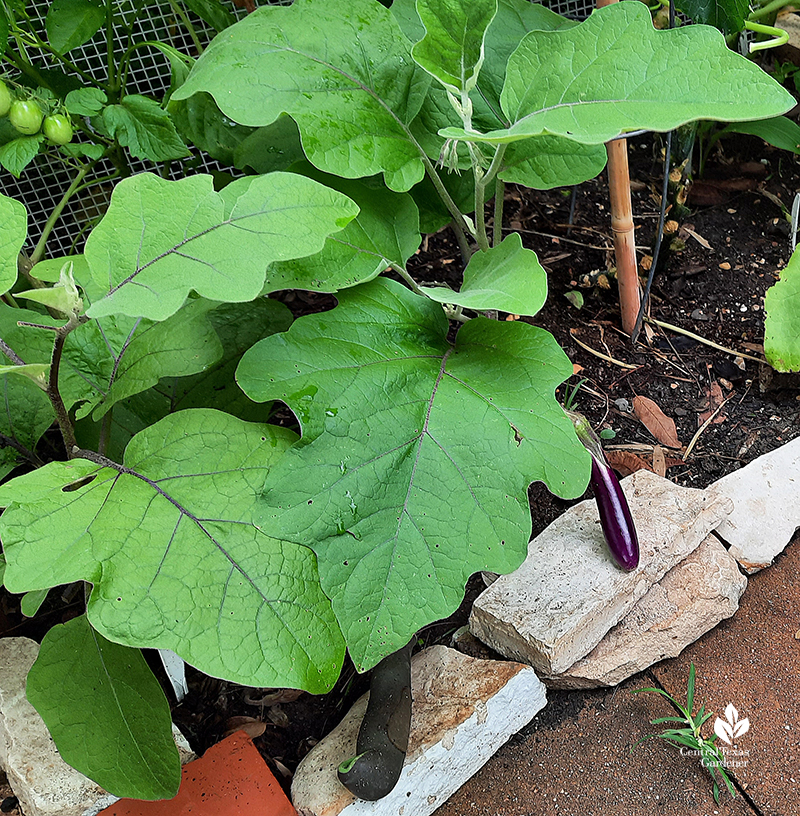
Then there’s Japanese squash.
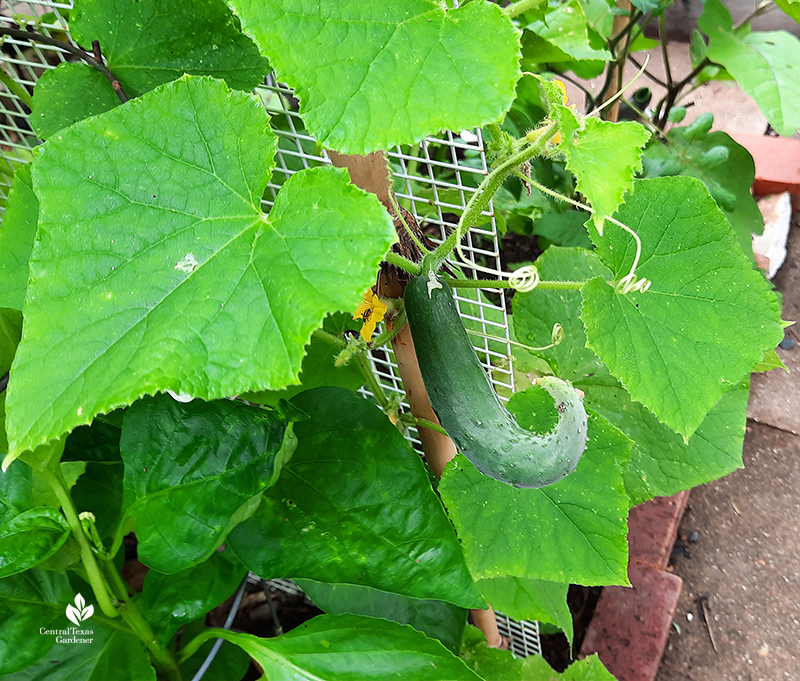
When she found wire mesh panels on the neighborhood’s Buy Nothing group, she put them to use to support tomatoes and squash. That’s my favorite part of meeting gardeners: picking up their clever invents from salvages.
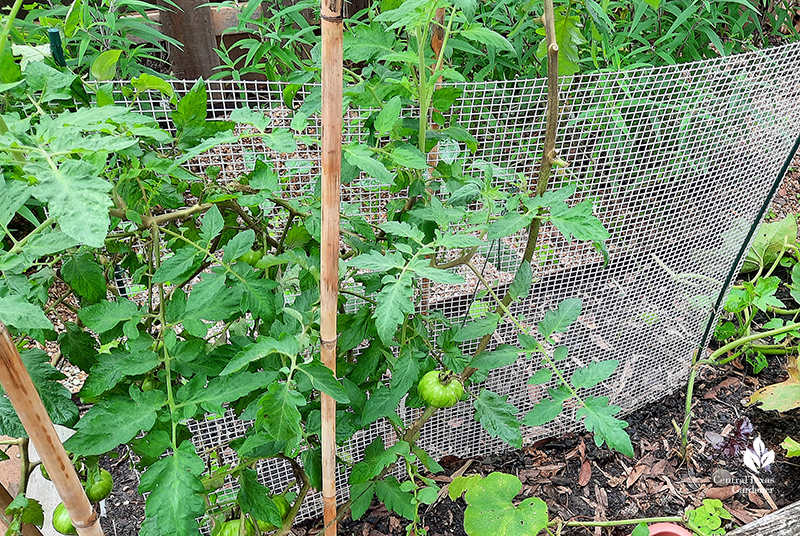
And indeed, gardeners are resourceful, too. She picked up spent mushroom blocks from local mushroom farmers to grow her own yellow oyster mushrooms.
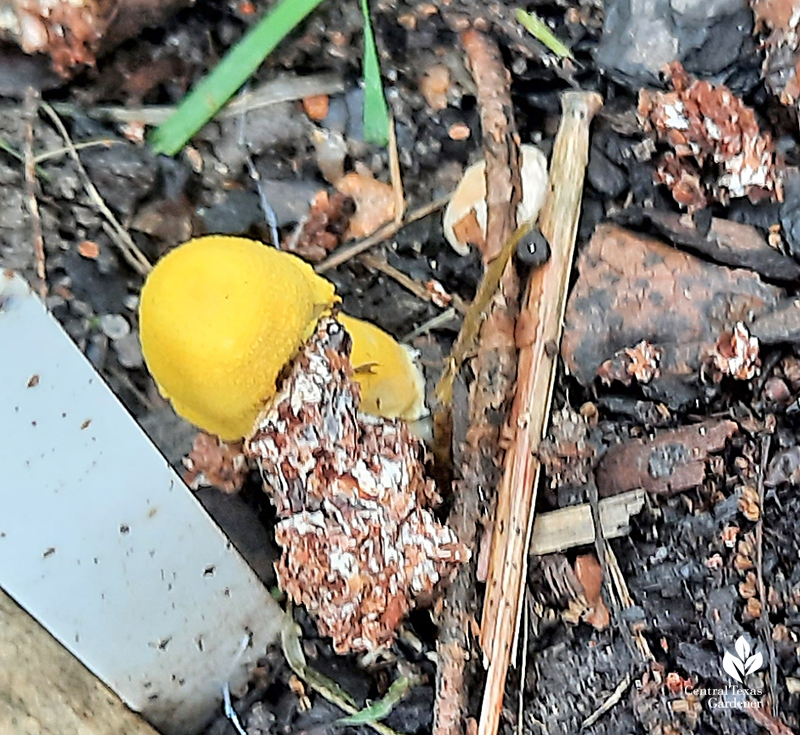
About mushrooms (since we’re seeing lots right now), Angel Schatz from Central Texas Mycological Society and the Austin Organic Gardeners joined us earlier this year to explain what mushrooms do and how to get mushroom blocks and grow your own. Watch here!
Follow Open Envelope Studio on Facebook and on Instagram.
Read more about their design of this garden.
Thanks for stopping by! See you next week, Linda
tags:

